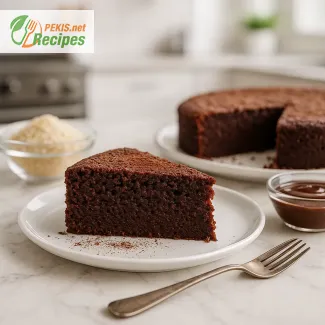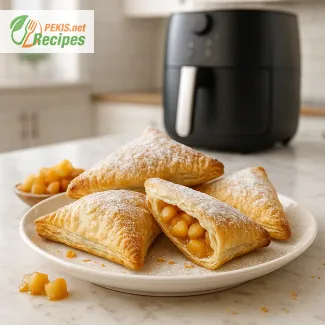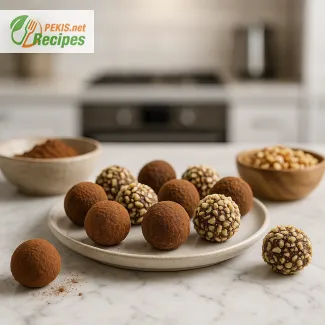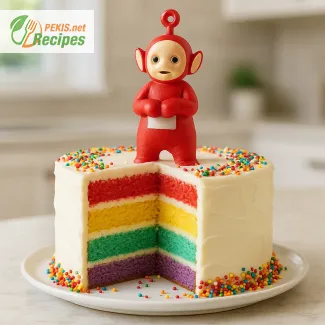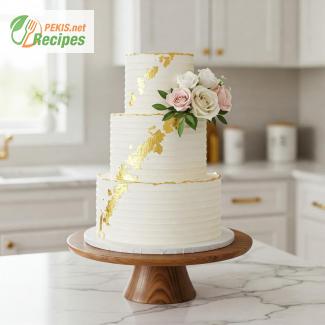
A timeless centerpiece for a memorable celebration
Discover the charm of creating a wedding cake that reflects your love story
When it comes to planning a wedding, few elements carry as much symbolism and celebration as the wedding cake. It's not just a dessert—it's a statement, a centerpiece, a shared experience that brings smiles, snapshots, and sweet memories to every guest. The perfect wedding cake should combine elegance, flavor, and personality, mirroring the couple's unique style and story. Whether you're going for a classic tiered cake with white fondant and floral accents or a more modern, minimalistic design with natural textures and bold flavors, a homemade wedding cake offers something truly special.
Creating your own elegant wedding cake may seem like an ambitious project, but it can be one of the most rewarding culinary experiences. It allows for full control over the flavor profile, decoration style, and presentation. It also introduces an intimate and personal touch to your celebration, knowing that the dessert everyone is admiring and enjoying was lovingly crafted by you (or someone close to you).
The concept of baking a wedding cake at home or even as a collaborative project with friends or family is gaining traction—not only as a budget-friendly option, but as a way to express creativity and affection. It transforms baking from a task into a memorable part of the pre-wedding journey. Choosing the right recipe is key, and this guide is designed to walk you through every essential step with ease, clarity, and a touch of inspiration.
The process of making a wedding cake includes much more than just baking—it’s about layering flavors, building structure, and decorating with artistry. From choosing between vanilla bean, lemon zest, or rich chocolate layers, to exploring fillings like raspberry coulis, mascarpone cream, or salted caramel, the options are both endless and exciting. Each decision can be tailored to reflect your tastes and wedding theme, turning the cake into a true extension of your event.
Texture and stability are crucial, especially for multi-tiered cakes that need to hold up through transport and hours on display. That’s why understanding which cake bases are most stable, how to construct the tiers safely, and how to use support structures correctly makes all the difference. A good wedding cake must not only taste amazing but also stand proud throughout the event, looking stunning from every angle.
Decoration is where the wedding cake truly comes to life. From smooth fondant finishes and piped royal icing to pressed edible flowers and hand-painted details, the decorative elements you choose can convey romance, elegance, whimsy, or even humor. Many couples opt for a floral aesthetic that matches the bridal bouquet, while others add gold leaf, marbled effects, or a touch of rustic charm with buttercream textures and greenery.
Beyond the cake’s visual appeal, flavor plays an equally vital role. Gone are the days when wedding cakes were dry or flavorless. Today’s wedding cakes are expected to be moist, flavorful, and well-balanced, offering a delicious ending to an unforgettable celebration. Combining traditional elements like almond sponge with modern twists such as matcha or pistachio cream ensures a flavor experience that guests will talk about long after the last bite.
Another aspect that makes homemade wedding cakes special is the ability to accommodate dietary preferences or allergies. Whether you're looking for a gluten-free, dairy-free, or vegan-friendly option, there are plenty of ways to adapt the base recipe without compromising on taste or structure. It’s all about making the celebration as inclusive and enjoyable as possible for everyone attending.
Of course, timing is everything when preparing your own wedding cake. Knowing when to bake, assemble, and decorate ensures you avoid last-minute stress. Many components—like sponges, fillings, or frostings—can be made in advance and stored properly to save time and maintain freshness. Having a clear timeline allows you to savor the creative process and feel confident going into the big day.
The experience of making a wedding cake from scratch is about more than the final product—it's about the intention behind it. Every step, from mixing batter to applying the finishing touches, becomes a labor of love. Whether you’re making it for your own wedding or for someone close to you, it’s a beautiful way to say, “This matters. You matter.”
In this recipe, you’ll discover a reliable structure for creating a professional-level wedding cake in your own kitchen. With thoughtful guidance, practical tips, and a step-by-step approach, even first-time bakers will feel empowered to tackle this meaningful project. It’s time to bring your dream wedding cake to life—layer by layer, swirl by swirl.
Ready to start your journey? In the next section, we’ll dive into the ingredients, tools, and techniques needed to make a wedding cake that’s not only beautiful but also absolutely delicious. Whether you're baking for a rustic countryside wedding, a chic urban soirée, or a whimsical garden gathering, this cake is designed to shine in every setting.
Let’s begin the sweet chapter of your love story—one tier at a time.
- Prepare the sponge cake layers
Preheat the oven to 175°C (350°F). Grease and line cake pans for each tier. In a stand mixer, beat eggs and sugar until light and fluffy (about 10 minutes). In a separate bowl, sift together flour, baking powder, and salt. Gently fold dry ingredients into the egg mixture. Warm the milk with the melted butter and vanilla extract. Gradually fold into the batter. Divide the batter equally into the pans and bake each tier separately for 35–45 minutes or until a toothpick comes out clean. Let cakes cool completely. - Make the raspberry coulis
In a saucepan, heat raspberries, lemon juice, and sugar. Bring to a boil, then reduce to a simmer. Mix cornstarch with a small amount of water and stir into the coulis. Cook until thickened. Let cool completely before using. - Prepare the vanilla mascarpone filling
Whip the mascarpone cheese with powdered sugar and vanilla paste until smooth. In a separate bowl, whip the heavy cream until stiff peaks form. Gently fold whipped cream into mascarpone mixture. Add lemon zest and refrigerate until ready to use. - Buttercream preparation
Beat softened butter until fluffy. Gradually add powdered sugar. Add milk and vanilla, and continue beating until light and creamy. This buttercream is used for crumb coating and optional final decoration. - Assemble the tiers
Slice each cake tier horizontally into even layers. Spread a thin layer of raspberry coulis, followed by the mascarpone cream between each layer. Stack layers evenly. Apply a thin crumb coat of buttercream over each tier and chill for 30 minutes. - Stack the cake
Insert dowels into the bottom and middle tiers for support. Carefully stack the cakes, starting from the largest tier at the bottom. Ensure each tier is centered and level. - Final decoration
Apply final coat of buttercream, if desired. Decorate with edible flowers, gold leaf, or other elements to match the wedding theme.
Elevating the Wedding Cake: Modern Twists on a Classic Tradition
Creative enhancements and expert advice to personalize your homemade wedding cake
The wedding cake is a time-honored tradition, yet even the most classic recipes can be elevated with thoughtful adjustments. Whether you're crafting a cake for your own special day or baking it for someone dear, the opportunity to personalize flavors, textures, and design elements allows you to create a dessert that’s not only beautiful but unforgettable. Enhancing a traditional recipe requires a balance of culinary knowledge, creativity, and precision. From flavor upgrades to nutritional tweaks and structural improvements, each decision contributes to a more refined final product.
Flavor infusions that transform the sponge
The sponge forms the base of your wedding cake and influences both taste and texture. While a traditional vanilla or almond base is always a safe choice, experimenting with infused flavors can add depth and sophistication.
- Citrus zest, such as lemon, orange, or bergamot, adds brightness and works beautifully in spring and summer weddings.
- For a warm, comforting note, consider adding spices like cinnamon, cardamom, or even a pinch of nutmeg. These pair exceptionally well with cream fillings and rustic autumn-themed celebrations.
- Incorporating floral extracts like rose water or orange blossom lends a delicate, romantic essence, though it’s essential to use these sparingly to avoid overpowering the palate.
Additionally, replacing a portion of the milk with buttermilk or yogurt can enhance the sponge’s moisture and tang, offering a richer mouthfeel that’s still light and airy.
Fillings that add depth and contrast
The filling is where much of the flavor creativity can shine. Instead of the standard vanilla mascarpone cream, try:
- Fruit compotes: Rhubarb-strawberry, blueberry-lavender, or passion fruit create contrast between the sweet cream and tart notes.
- Nut-based creams: A layer of hazelnut praline or pistachio paste mixed into the filling offers a delightful crunch and nuttiness.
- Chocolate ganache: For those who want indulgence, adding a thin layer of dark chocolate ganache between tiers introduces boldness that balances sweet cream layers.
These enhancements not only introduce new flavors but also contribute to the visual appeal when slicing the cake.
Decoration details that elevate presentation
A well-decorated cake is a visual centerpiece. While buttercream and fondant remain the standard, there are several modern enhancements that can give your cake a bespoke look:
- Textured buttercream finishes, such as stucco-style or petal strokes, give a more artistic, handmade look.
- Pressed edible flowers bring a natural, elegant aesthetic and allow seasonal customization.
- Hand-painted designs, from delicate vines to metallic brushstrokes, create an artisanal touch that guests will remember.
Even drip techniques with flavored glazes (white chocolate, salted caramel) can add movement and character to the cake while introducing another layer of taste.
Health-conscious ingredient swaps
For those who want a slightly healthier version of the wedding cake without sacrificing flavor or structure, several ingredient substitutions can be made:
- Replace a portion of the all-purpose flour with almond flour or whole grain flour for added nutrients and a denser, more rustic texture.
- Reduce the amount of sugar by 10–20%, especially if using naturally sweet fillings like fruit compotes.
- Swap heavy cream with coconut cream for a dairy-free and subtly exotic twist.
- Use natural food colorings derived from beetroot, spirulina, or turmeric for decorative elements.
These changes make the cake more inclusive and cater to guests with dietary preferences or restrictions, such as gluten-free, lactose-intolerant, or low-sugar needs.
Common mistakes to avoid when baking wedding cakes
Even with a solid recipe, the process of baking a multi-tiered cake requires focus and care. Here are the most common pitfalls:
- Overmixing the batter: This can lead to a dense or rubbery cake. Always fold ingredients gently and mix only until combined.
- Not leveling layers: Uneven layers can cause tilting or instability. Use a serrated knife or cake leveler for a flat base.
- Skipping the crumb coat: A thin initial layer of buttercream locks in crumbs and provides a smooth surface for decoration.
- Poor support structure: Tiers must be supported with dowels or straws. Never stack cakes without internal supports.
Paying attention to these areas ensures your cake is both beautiful and structurally sound.
Why homemade is often better than store-bought
A homemade wedding cake offers more than just cost savings—it brings emotion, effort, and intentionality to the celebration. You control every ingredient, from the quality of the butter to the origin of the eggs. The flavor is often fresher, and the ability to tailor it to your liking adds a personal element no bakery can replicate.
Moreover, the process of making the cake, whether solo or with loved ones, becomes part of your wedding story. It offers moments of bonding, laughter, and creativity, often leading to treasured memories beyond the final product.
Tailoring the cake to seasons and themes
Choosing ingredients and decorations based on the season or wedding theme brings cohesion to the celebration. For example:
- Spring: Light floral flavors, fresh berries, pastel decorations.
- Summer: Citrus and tropical fruits, minimal buttercream.
- Autumn: Warm spices, caramel, and golden tones.
- Winter: Rich chocolate or liqueur-based flavors, metallic accents, snowflake details.
Themes such as boho, vintage, or minimalist can also inspire color palettes and finishing touches.
Improving the traditional wedding cake
Enhancing a wedding cake recipe is all about balance. You want it to remain familiar and comforting, yet memorable and exciting. Through mindful ingredient swaps, creative flavor pairings, and attention to detail in decoration and assembly, even the most traditional recipe can be transformed into something unique and personal. Whether you're seeking to impress your guests or simply savor a dessert that reflects your story, the possibilities are as rich as the layers you build.
Allergens present
- Eggs
- Dairy (butter, mascarpone, cream)
- Gluten (wheat flour)
Substitution tips for allergens and gluten
- Eggs: Replace each egg with 60 g (¼ cup) of unsweetened applesauce or 1 tbsp ground flaxseed mixed with 3 tbsp water.
- Dairy: Use plant-based mascarpone, coconut cream, and vegan butter alternatives.
- Gluten: Substitute cake flour with a certified gluten-free flour blend that includes xanthan gum.
- Vitamin A: 280 µg – supports vision and immune function
- Calcium: 90 mg – essential for bone health
- Iron: 1.2 mg – important for oxygen transport
- Vitamin D: 0.8 µg – aids in calcium absorption
- Magnesium: 18 mg – contributes to muscle and nerve function
- Anthocyanins (from raspberries): 25 mg – protect cells from oxidative stress
- Vitamin C: 6 mg – enhances immune defense and skin health
- Polyphenols: ~45 mg – support cardiovascular health and reduce inflammation
